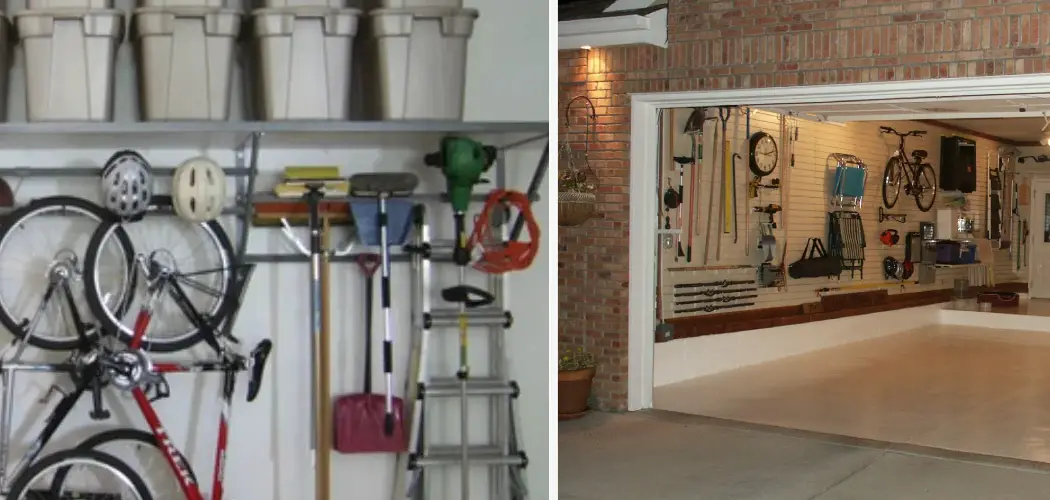Winter is quickly approaching, and for many homeowners, that means it’s time to start thinking about storing away their patio furniture. While outdoor furniture is designed to withstand the elements, it’s important to properly protect and store it during the colder months to ensure its longevity. Plus, freeing up space on your patio can make room for holiday decorations or other seasonal activities. But how exactly should you go about storing your patio furniture in the garage?
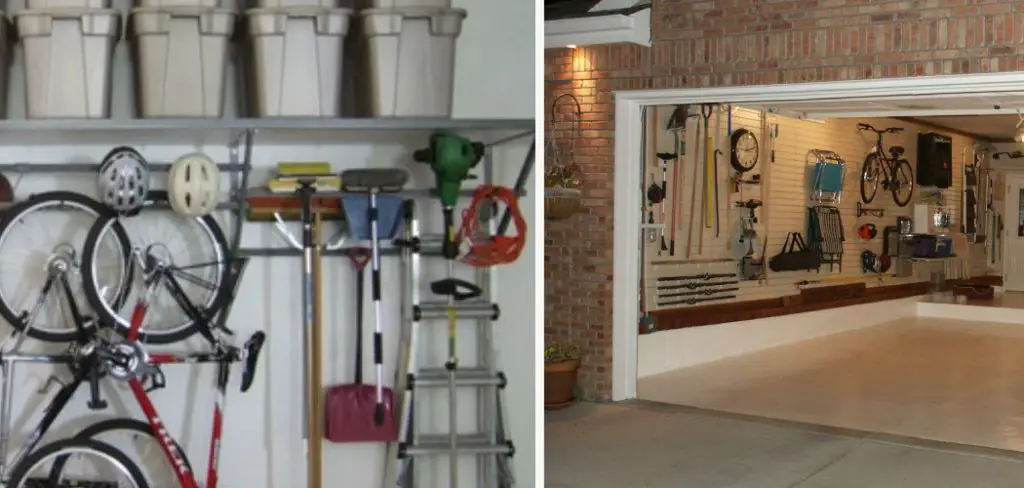
In this blog post, we’ll cover everything you need to know about how to store patio furniture in the garage – from choosing the right storage method to organizing your items effectively – so that when spring arrives, your outdoor oasis will be ready and waiting for you once again. So buckle up and get ready to transform that cluttered garage into a well-organized storage space for your beloved patio pieces!
Why May You Want to Store Patio Furniture in Garage?
1 . To Protect from Harsh Weather
Patio furniture is often placed outside since it’s designed for outdoor use. However, prolonged exposure to harsh weather conditions such as extreme heat, rain, or snow can cause damage to the furniture. Therefore, storing your patio furniture in the garage during severe weather can help protect it from potential damage.
2 . To Prevent Fading or Discoloration
Another reason to store patio furniture in the garage is to prevent fading or discoloration. Direct exposure to sunlight can cause furniture materials, such as fabric, wood, or plastic, to fade over time. By storing your patio furniture in the garage, you can prolong its color and keep it looking vibrant for longer.
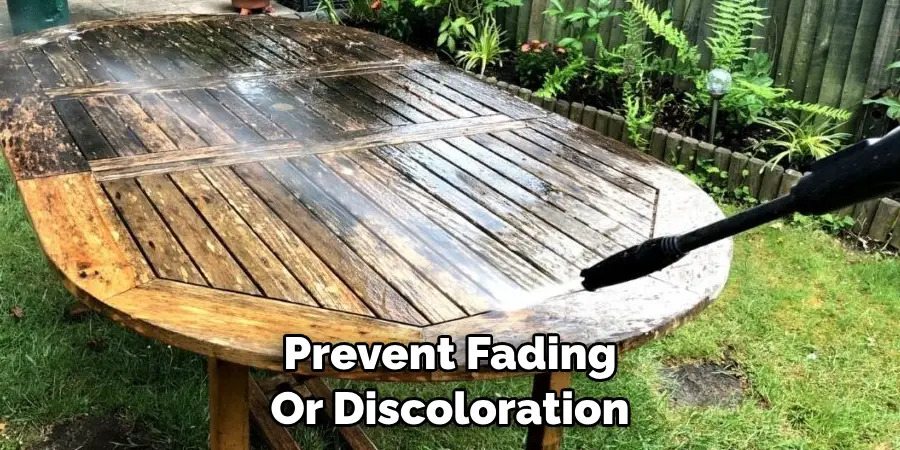
3 . To Keep It Clean and Dust-Free
Leaving patio furniture outside can lead to a buildup of dirt, dust, and other debris. Storing it in the garage can keep it clean and free from potential damage caused by accumulated grime. This is especially important for fabric or cushioned furniture that may be more difficult to clean.
4 . To Save Space in Your Yard or Patio
Storing patio furniture in the garage can also save space in your yard or patio. During colder months or when you’re not using the furniture, it can be beneficial to store it in a compact space like the garage. This will free up more room for other outdoor activities or allow for easier movement and navigation in your outdoor area.
5 . To Extend Its Lifespan
Finally, storing patio furniture in the garage can help extend its lifespan. By protecting it from harsh weather, preventing fading and discoloration, and keeping it clean, you can ensure that your furniture lasts longer and stays in good condition. This can save you money in the long run by avoiding the need for frequent replacement or repairs.

12 Ideas on How to Store Patio Furniture in the Garage
1. Move Furniture to the Center
When storing your patio furniture in the garage, it is important to keep everything organized and easily accessible. One way to do this is by moving all of the furniture towards the center of the garage. This will create a clear pathway around the perimeter and allow for easier access when needed.
2. Use Wall Space
Utilizing wall space can be a great way to store patio furniture in the garage. Install shelves, hooks, or pegboards to hang smaller items such as folding chairs, cushions, and umbrellas. This not only frees up floor space but also keeps your items off the ground, preventing potential damage.
3. Invest in Storage Containers
Storage containers are a great investment when it comes to storing patio furniture in the garage. They come in various shapes and sizes to accommodate different types of furniture, keeping them protected from dust, dirt, and potential water damage.
4. Disassemble Furniture
If your patio furniture is bulky or takes up a lot of space, consider disassembling it before storing it in the garage. This will not only make it easier to transport and store, but it also maximizes space in the garage.
5. Use Bungee Cords or Straps
Bungee cords or straps can come in handy when storing larger furniture pieces such as tables or loungers. Secure them to the wall or ceiling of the garage so that they are out of the way and not taking up valuable floor space.
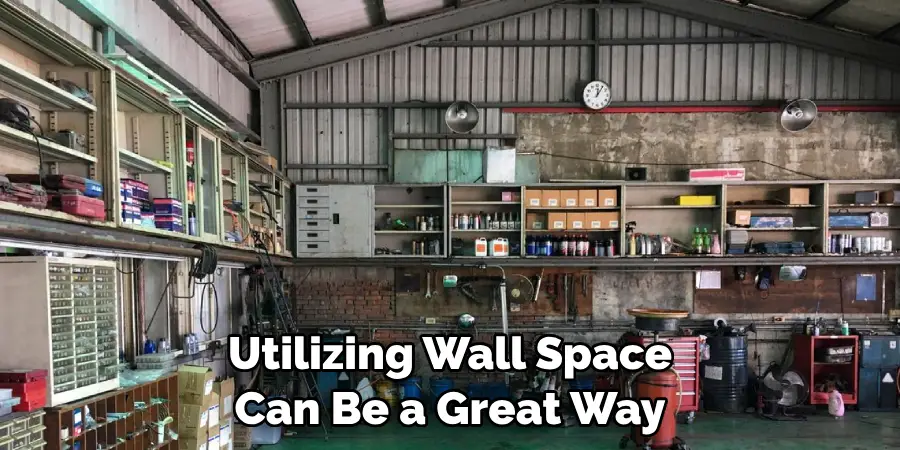
6. Cover Furniture
Even if your patio furniture is stored in the garage, it is still exposed to potential dust and dirt. To keep your furniture protected, invest in covers specifically designed for outdoor furniture or use old sheets or tarps.
7. Utilize Overhead Storage
Don’t forget about utilizing overhead storage space in the garage. This can be a great place to store items that are not frequently used or seasonal furniture during the off-season.
8. Store Cushions Indoors
If possible, it is best to store your cushions indoors rather than in the garage. This will prevent them from potential water damage and also keep them smelling fresh for when you’re ready to use them again.
9. Label Everything
Labeling is crucial when storing items in the garage. This will not only help you find things easier but also keep everything organized and prevent any confusion when taking out your patio furniture for the season.
10. Utilize Underneath Furniture
Don’t overlook the space under your furniture. This can be a great place to store smaller items such as gardening tools or outdoor games. Just make sure to keep them in plastic bins or containers to protect them from potential water damage.
11. Consider Temperature and Moisture Control
Depending on where you live, the temperature and moisture levels in your garage can fluctuate greatly. If this is a concern, invest in dehumidifiers or consider storing your furniture elsewhere during extreme weather conditions.
12. Keep Pests Away
The last thing you want is for pests to make a home in your patio furniture while it is being stored in the garage. To prevent this, make sure to thoroughly clean and inspect all furniture before storing it away, and consider using pest-repellent products near the storage area.
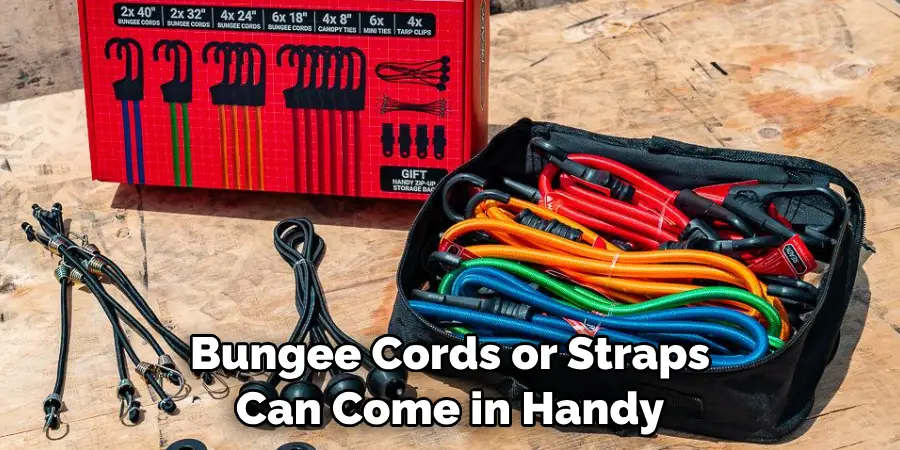
Frequently asked questions
What Precautions Should You Take While Storing Patio Furniture in Garage?
When storing patio furniture in your garage, there are a few precautions you should take to ensure that your furniture remains clean and undamaged. These include:
- Clean the furniture before storing it: Ensure that your patio furniture is free of any dirt or debris before placing it into storage. This will help prevent any stains from setting in and keep your furniture looking new.
- Use protective covers: If possible, cover your furniture with a waterproof tarp or plastic sheeting to protect it from dust and moisture.
- Keep it elevated: Avoid storing your furniture directly on the garage floor, as this can cause damage due to the cold and damp conditions. Instead, place your furniture on wooden pallets or blocks to keep it elevated and away from any potential moisture.
- Check for any damage: Before storing your furniture, inspect it for any signs of wear and tear. If you notice any broken or damaged pieces, repair them before placing the furniture into storage.
Can I Keep My Patio Furniture in the Garage All Year Round?
While storing your patio furniture in the garage is a great way to protect it during harsh weather conditions, it may not be the best option for long-term storage. Excessive heat or cold can cause damage to certain materials like wood and wicker, leading to cracking and warping. If possible, try to store your furniture inside your home or in climate-controlled storage during the off-season.
How Do I Prevent Pests from Damaging My Patio Furniture While It’s Stored in the Garage?
Pests like rodents and insects can cause damage to your patio furniture while it’s stored in the garage. To prevent this, make sure to seal any gaps or openings in your garage that pests may use to enter. You can also use pest repellents or traps to keep these unwanted visitors away from your furniture.
Conclusion
Now you know how to store patio furniture in the garage properly. With the right techniques, you can ensure that your furniture remains in great condition and is ready to use whenever you need it. Remember to keep your furniture clean, dry, and well-protected from sunlight and other elements. By following these simple steps, you can extend the lifespan of your patio furniture and enjoy it for many years to come.
In addition to proper storage techniques, it is also important to regularly inspect your furniture for any signs of damage or wear. This will allow you to address any issues early on and prevent them from becoming more serious problems down the road.

